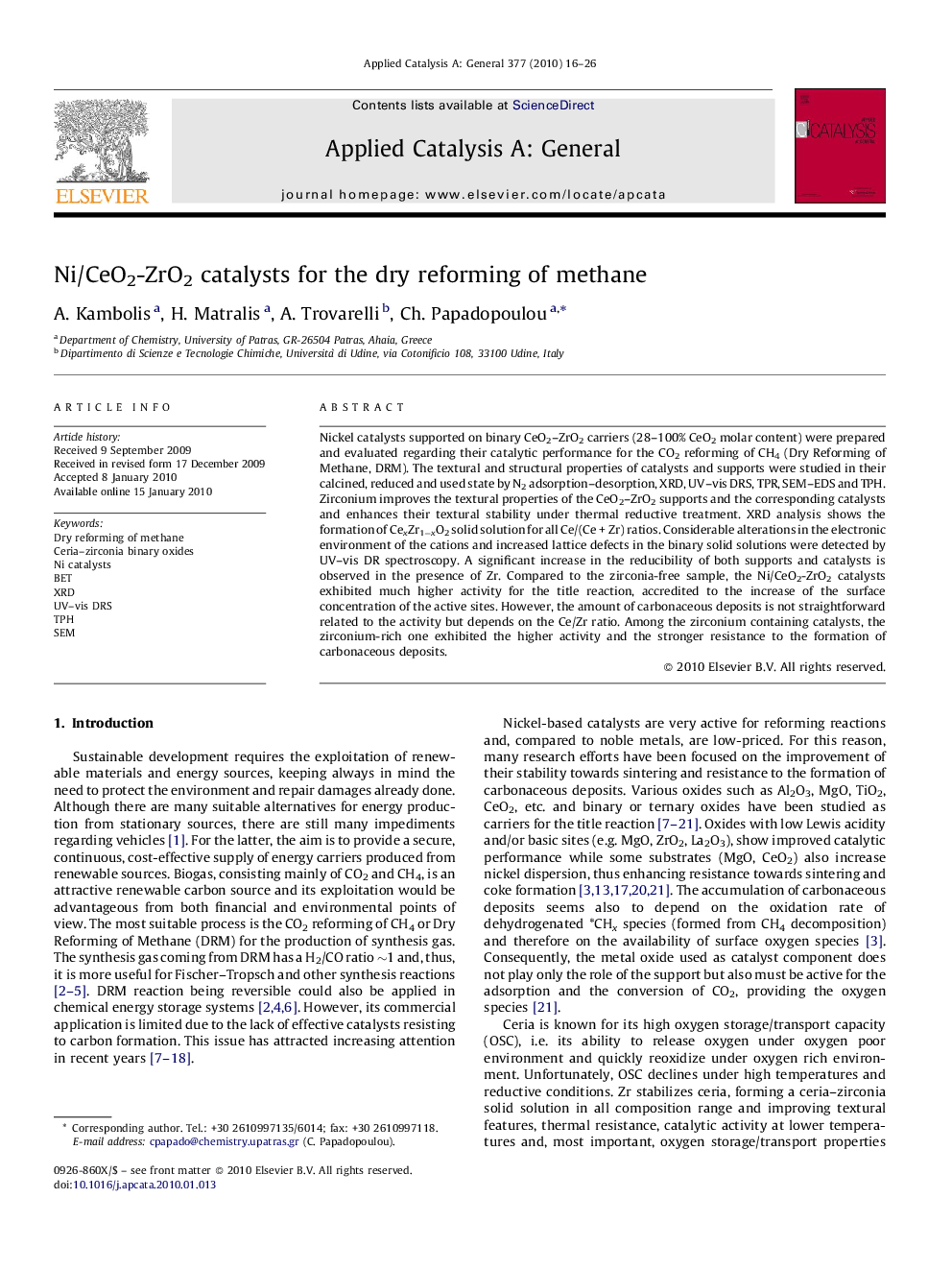| کد مقاله | کد نشریه | سال انتشار | مقاله انگلیسی | نسخه تمام متن |
|---|---|---|---|---|
| 42335 | 45921 | 2010 | 11 صفحه PDF | دانلود رایگان |

Nickel catalysts supported on binary CeO2–ZrO2 carriers (28–100% CeO2 molar content) were prepared and evaluated regarding their catalytic performance for the CO2 reforming of CH4 (Dry Reforming of Methane, DRM). The textural and structural properties of catalysts and supports were studied in their calcined, reduced and used state by N2 adsorption–desorption, XRD, UV–vis DRS, TPR, SEM–EDS and TPH. Zirconium improves the textural properties of the CeO2–ZrO2 supports and the corresponding catalysts and enhances their textural stability under thermal reductive treatment. XRD analysis shows the formation of CexZr1−xO2 solid solution for all Ce/(Ce + Zr) ratios. Considerable alterations in the electronic environment of the cations and increased lattice defects in the binary solid solutions were detected by UV–vis DR spectroscopy. A significant increase in the reducibility of both supports and catalysts is observed in the presence of Zr. Compared to the zirconia-free sample, the Ni/CeO2-ZrO2 catalysts exhibited much higher activity for the title reaction, accredited to the increase of the surface concentration of the active sites. However, the amount of carbonaceous deposits is not straightforward related to the activity but depends on the Ce/Zr ratio. Among the zirconium containing catalysts, the zirconium-rich one exhibited the higher activity and the stronger resistance to the formation of carbonaceous deposits.
Ni/CeO2-ZrO2 catalysts (CeO2 molar content: 28–100%) were prepared, characterized and tested for the Dry Reforming of Methane (DRM). Compared to Ni/CeO2, the Ni/CeO2-ZrO2 catalysts exhibited much higher activity while the amount of carbonaceous deposits is related to the Ce/Zr ratio. This catalytic behaviour was accredited to the increase of the concentration of the active sites.Figure optionsDownload high-quality image (153 K)Download as PowerPoint slide
Journal: Applied Catalysis A: General - Volume 377, Issues 1–2, 1 April 2010, Pages 16–26